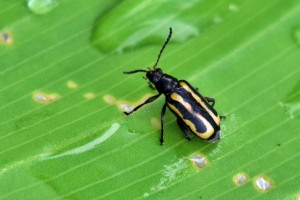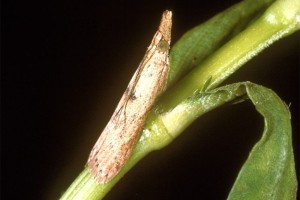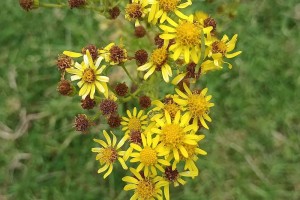Alligator weed
Project overview
Alligator weed is native to the Paraná River area of South America and is thought to have been introduced into New Zealand in ship’s ballast in the early 20th Century. Viable seed has not been recorded in New Zealand, with the plant’s spread being by vegetative propagation. Alligator weed is established in both aquatic and terrestrial situations in New Zealand. Aquatic weed develops hollow stems that allow it to form floating mats on lakes and ponds. Terrestrial weed mainly affects riparian pasture.
Two agents were established against alligator weed in New Zealand during the 1980s: a defoliating beetle (Agasicles hygrophila) and a stem-mining moth (Macrorrhinia endonephele). Both have major impacts on floating weed in warmer localities but are ineffective on terrestrial infestations.
Additional candidate agents to control alligator weed have recently been sought in South America but, to date, all were rejected due to the risk that they will attack Alternathera nahui and A. denticulata. These plants are recent colonists that have been listed as native to New Zealand because it is possible that they arrived as seeds attached to birds migrating between Australia and New Zealand. The status of these non-target plants in New Zealand, and the acceptability of some non-target attack may require clarification for biocontrol of terrestrial weed can proceed.
- pdf Key hurdle cleared for alligator weed project - Issue 61, p.7 pdf File, 1.1 MB
- pdf Another alligator weed agent bites the dust - Issue 45, p.11 pdf File, 711 KB
- pdf Looking for something to bite back - Issue 42, p.8 pdf File, 265 KB
- pdf Alligator weed agents dip out - Issue 36, p.3 pdf File, 1 MB


